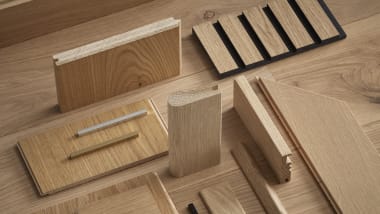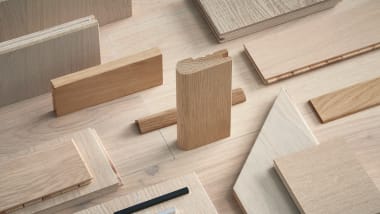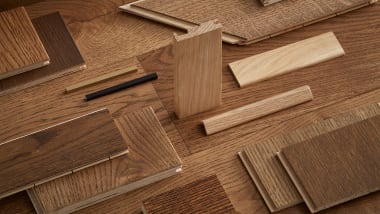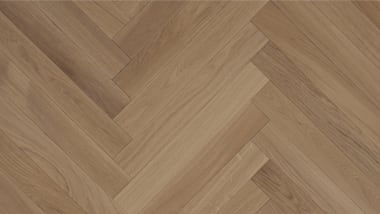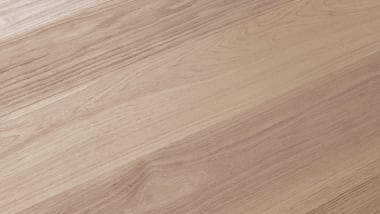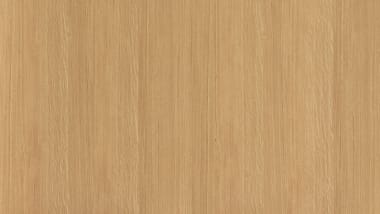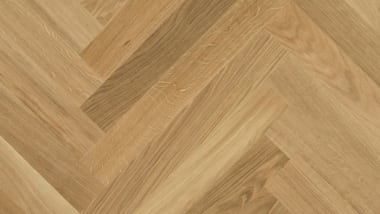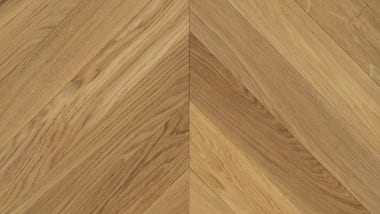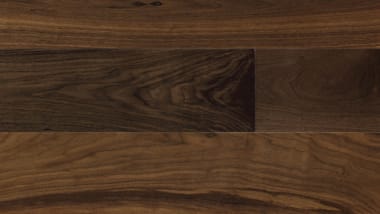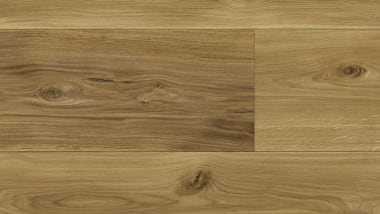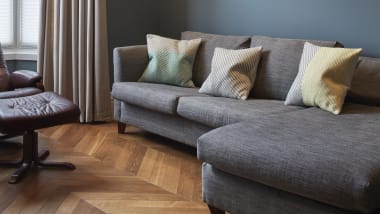Engineered Wood Flooring
Engineered wood flooring is, quite simply, hardwood flooring where the boards consist of more than one layer. It looks and feels just like a traditional wooden floor because the top layer is real solid hardwood, and it is perfect for use as paneling or even joinery projects like doors and tabletops as well as for floors. What's more, it offers all the benefits of a traditional wooden floor, plus a significant number of other benefits all of its own.
engineered wood flooring BENEFITS
Don't confuse engineered wood flooring with laminate (floating wood tile) or veneer. Laminate is simply an image of wood, whilst veneer uses only a very thin layer of the real thing over a core of some type of composite, usually fiberboard. Engineered wood is now the preferred type of timber flooring fitted worldwide, and at Havwoods in North America we stock around 200 superb planks and blocks ready and waiting for immediate dispatch.
Hardwood's Engineered Wood Floors offer many benefits. For one thing, they work with all interior design styles and color schemes. So a change in taste doesn't necessitate changing your floor. Of course, this makes it highly desirable for home buyers, so not only will it make your house more saleable, it can actually add value too.
Firstly it means that much wider planks may be produced, and there is little doubt that wider planks result in a more spectacular floor. (180mm) 7" wide wood flooring planks are quite standard, and at Havwoods (260mm) 10″ wide plank flooring are far from unusual. Indeed, in our Hand Grade collection, our most sublime engineered hard flooring range, the widest planks measure an enormous (480mm) 19".
Engineered hardwood flooring is easy to live with. Wood floors offer significant benefits for physical health since they create a better building environment by not harboring pollen, pet dander, dust, mold or other allergens. And now having more timber on view has been linked to mental health too. Research from Canada, Japan and a number of mainland European countries all show that the significant use of wood in interior schemes achieves similar stress-reducing benefits to being surrounded by nature itself.
Wood floors are easy to maintain, simply requiring regular dusting or vacuuming and the occasional damp mop. They are also a cost-effective thermal insulator and have an excellent ecological pedigree - every cubic meter of wood used as a substitute for other building materials reduces CO2 emissions by, on average, 1.1 tonnes.
Engineered hardwood flooring provides all of these benefits, and it offers a number of advantages over traditional solid hardwood boards too. These include greater stability, ensuring a better-looking, longer-lasting floor; more installation options, for quicker, easier fitting; and better use of slow-growth species whilst providing an enormous range of finishes, giving you a far, far wider choice.
Humidity and hardwood flooring
No matter how well seasoned, oiled, waxed or lacquered it may be, wood remains hygroscopic. So when humidity is high it will absorb some of that moisture, swell and rise or ‘crown’ in the middle. When that same piece is placed in a dry environment – as happens when using heating or air conditioning – it will release its moisture, dry out and shrink. Lay pieces side by side in a confined space and these changes in humidity can result in them bowing, warping, cupping or gaping over time. This is what can happen with traditional solid hardwood flooring.
Engineered hardwood floors consist of more than one layer. The top layer is solid wood, the other layers may be plywood, softwood or more layers of hardwood. Each layer is bonded to the next with the grain running at right angles. This makes it virtually impossible for the board to swell or shrink, meaning that when it is laid it is highly unlikely to warp and gap, or otherwise suffer in the same way as solid hardwood flooring.
The top layer of solid wood, otherwise known as the wear layer or lamella, may be anything from 2mm - a title more than 1/16" - to 6mm - almost 1/4" thick. The thicker this top layer, the more times it may be sanded and refinished to remove any signs of wear. A 6mm wear layer is similar to the depth above the tongue in a traditional, solid tongue and groove plank, meaning that it will wear just as well.
ENGINEERED WOOD meanS bigger and MORE STABLE planks
In addition to ensuring a better long-term fit, the exceptional stability offered by engineered hardwood flooring has a number of other advantages.
Firstly it means that much wider planks may be produced, and there is little doubt that wider planks result in a more spectacular floor. (180mm) 7" wide engineered planks are quite standard, and at Havwoods (260mm) 10″ widths are far from unusual. Indeed, in our Hand Grade collection, our most sublime engineered hardwood flooring range, the widest planks measure an enormous (480mm) 19".
The greater stability also means that most engineered hardwood floors can be fitted over underfloor heating, unlike the majority of solid wood floors. Furthermore, they offer the option of employing easier methods of installation: engineered planks may be glued down or laid floating, which means that they are attached to each other, instead of to the sub-floor over which they are laid.
Engineered hardwood offers the widest selection of finishes
Most engineered hardwood flooring comes pre-finished. This means that many hundreds of different effects can be achieved though techniques like smoking, sawing, brushing and planing, as well as the use of stains and oils, and it reduces the need to use exotic, often endangered species to achieve specific effects. Indeed, at Havwoods, over 90% of our engineered hardwood is oak, although you may find it to be almost unrecognisable in many of our products.
Of course, not only does pre-finishing offer you a far greater aesthetic choice, it means that both you and your client know exactly what to expect. And obviously it makes your floor much quicker and easier to install.
CHOOSING the best wood floor FOR YOU
Havwoods have been supplying architects and specifiers with wood that works for over 40 years. It's more than a catchy phrase, it’s our philosophy: we will only supply products which we are confident are properly suited to the task for which they are specified.
And that's the important point. We stock around 200 different engineered wood flooring products in North America and can order many hundreds more. They come in different thicknesses, with different finishes, different base layers and in different grades of timber. All are excellent, so it's not a question of which one is best but of which one is best for you.
Most of our engineered flooring boards are produced from European oak. This is sometimes know by its country of origin - French oak, English oak, German oak, et cetera - and it actually encompasses two different species of white oak. It is similar to American white oak but a little darker in tone with a finer grain and growth rings, and it exhibits more even coloring. It is a heavy and relatively expensive timber, but very strong, hard, tough and durable. Other benefits are that it is practically sap-free and takes both finishes and special techniques like fuming particularly well.
And since most of our products are milled in Europe they are live sawn. Unlike plain sawing, the North American method where the rift and quartered boards are culled and sold at a premium, each cut is made straight through the heartwood and is parallel to the next. This results in a mixture of plain, quarter and rift sawn cuts all in one wide plank of wood. Capturing all parts of the wood in one cut gives the floor a unique and notably beautiful appearance, and because at least a third of the cut is quarter sawn the planks themselves are particularly stable.
In our product specifications you will find references to the grade - prime, select, classic, character, natural and rustic - and the finish - lacquered, oiled, et cetera. None are better than the others (you can find out more about grades and finishes here), like color they are simply a matter of taste and preference. So browse our boards to see which you find the most appealing.
